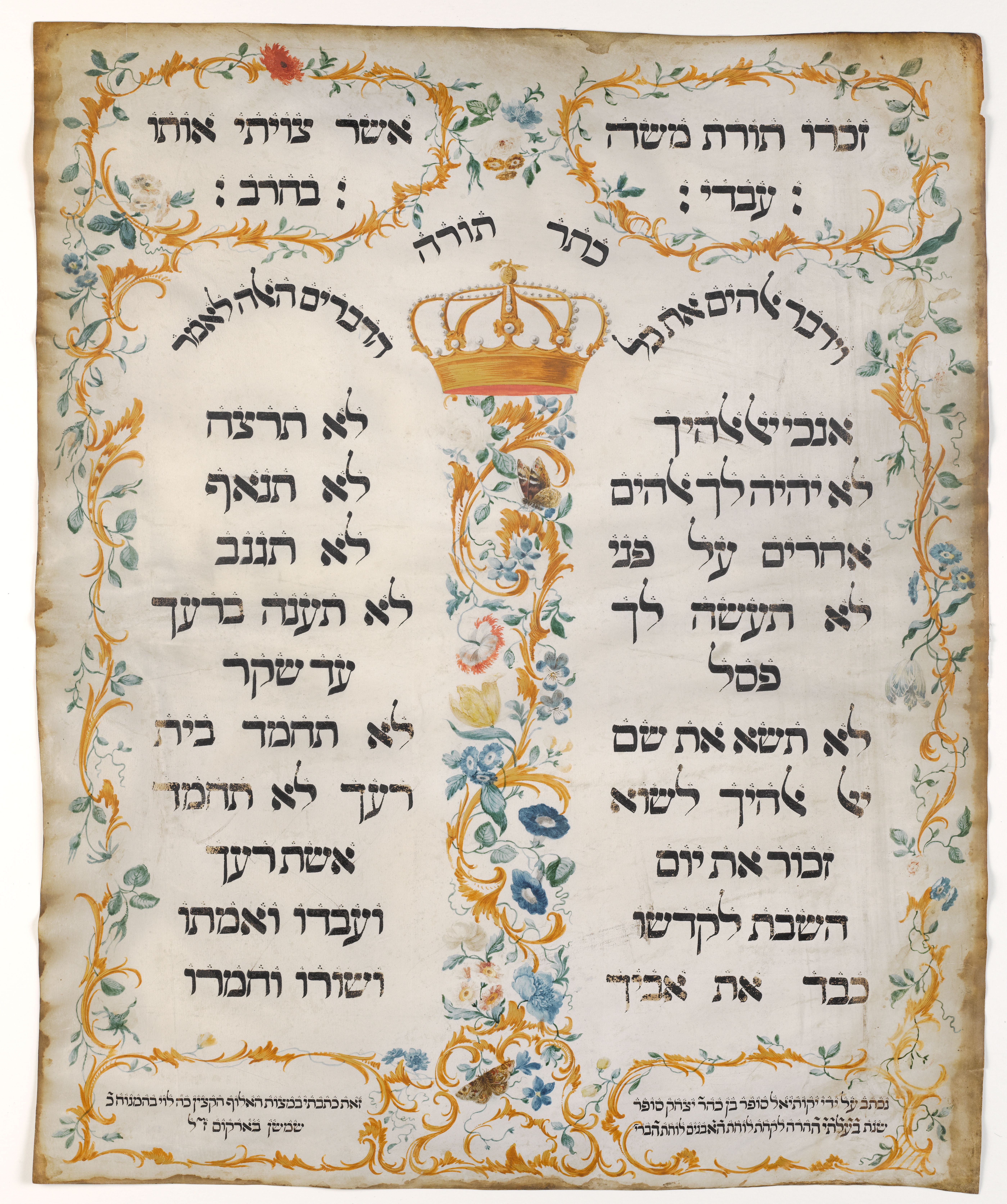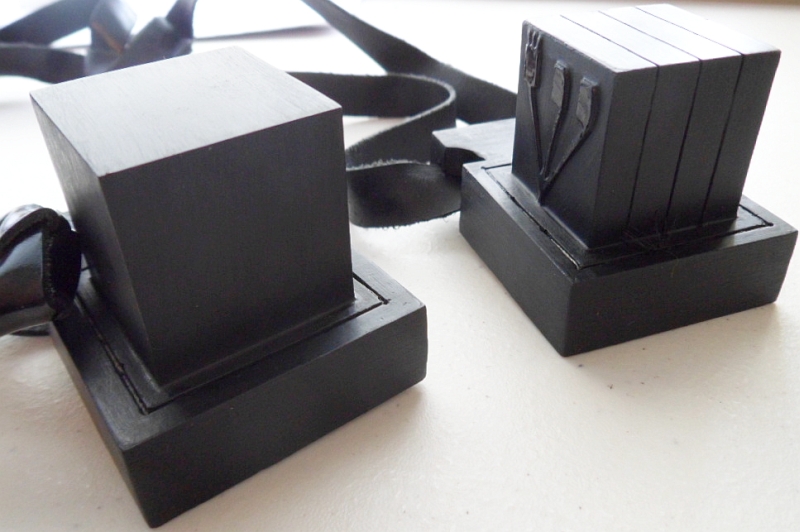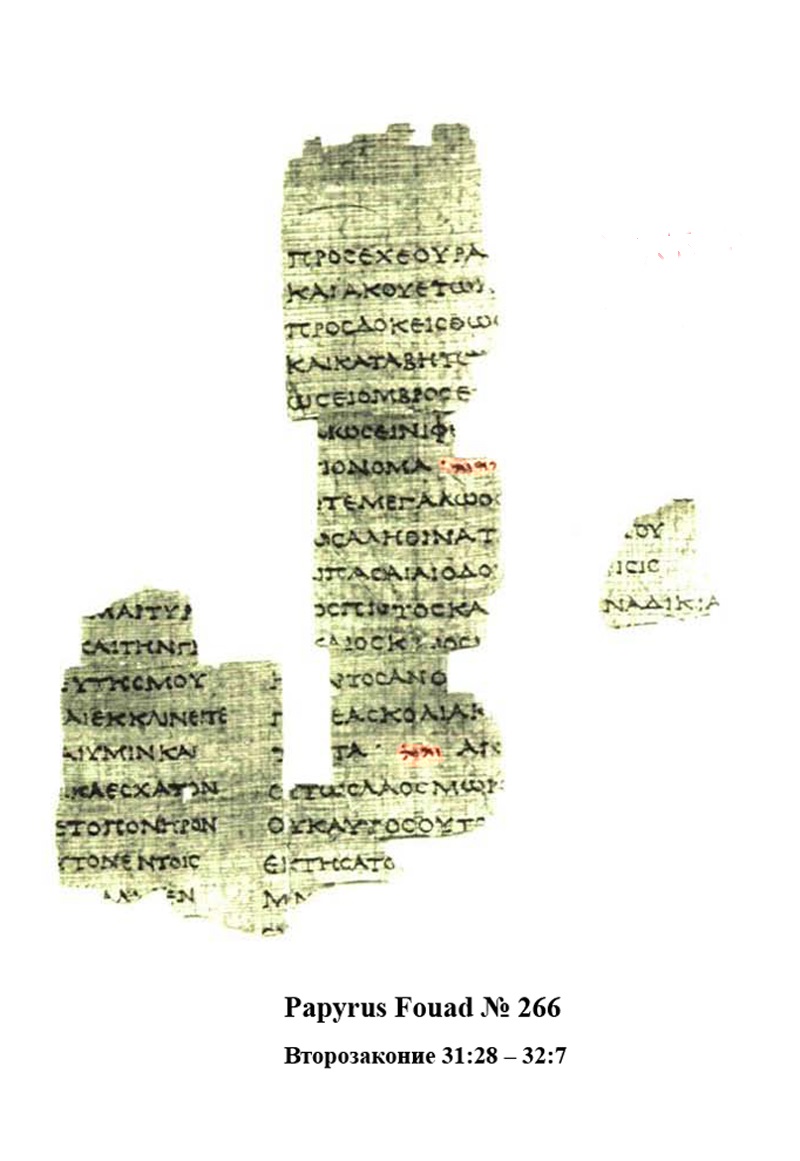|
Masseket Soferim
''Masekhet Soferim'' (), the "Tractate of the Scribes", is a non-canonical Talmudic tractate dealing especially with the rules relating to the preparation of holy books, as well as with the laws of Torah reading. One of the minor tractates, it is generally thought to have originated in eighth-century Land of Israel. Being of late and uncertain date, it is now generally printed as Talmudic addenda. Chapters Soferim consists of 21 chapters, containing 225 paragraphs ("halakhot") in all. The chapters may be summarized as follows: :1: On parchment and other writing-material; language, and translation of the Jewish Scriptures; the Septuagint; persons who are qualified to prepare books; leaves and pages; open and closed paragraphs. :2: Spaces between letters, words, lines, pages, and books; space-lines; number of columns to the leaf, and lines to the column; width and height of the scrolls; rollers; sewing; mending; final letters. :3: Writing several books on a single scroll; ver ... [...More Info...] [...Related Items...] OR: [Wikipedia] [Google] [Baidu] |
Talmudic
The Talmud (; ) is the central text of Rabbinic Judaism and the primary source of Jewish religious law (''halakha'') and Jewish theology. Until the advent of modernity, in nearly all Jewish communities, the Talmud was the centerpiece of Jewish cultural life and was foundational to "all Jewish thought and aspirations", serving also as "the guide for the daily life" of Jews. The Talmud includes the teachings and opinions of thousands of rabbis on a variety of subjects, including halakha, Jewish ethics, philosophy, customs, history, and folklore, and many other topics. The Talmud is a commentary on the Mishnah. This text is made up of 63 tractates, each covering one subject area. The language of the Talmud is Jewish Babylonian Aramaic. Talmudic tradition emerged and was compiled between the destruction of the Second Temple in 70 CE and the Arab conquest in the early seventh century. Traditionally, it is thought that the Talmud itself was compiled by Rav Ashi and Ravina II aro ... [...More Info...] [...Related Items...] OR: [Wikipedia] [Google] [Baidu] |
Ten Commandments
The Ten Commandments (), or the Decalogue (from Latin , from Ancient Greek , ), are religious and ethical directives, structured as a covenant document, that, according to the Hebrew Bible, were given by YHWH to Moses. The text of the Ten Commandments appears in three markedly distinct versions in the Bible: at Exodus , Deuteronomy , and the " Ritual Decalogue" of Exodus . The biblical narrative describes how God revealed the Ten Commandments to the Israelites at Mount Sinai amidst thunder and fire, gave Moses two stone tablets inscribed with the law, which he later broke in anger after witnessing the worship of a golden calf, and then received a second set of tablets to be placed in the Ark of the Covenant. Scholars have proposed a range of dates and contexts for the origins of the Decalogue. “Three main dating schemes have been proposed: (1) it was suggested that the Decalogue was the earliest legal code given at Sinai, with Moses as author, and the Amphictyony con ... [...More Info...] [...Related Items...] OR: [Wikipedia] [Google] [Baidu] |
Pentateuch
The Torah ( , "Instruction", "Teaching" or "Law") is the compilation of the first five books of the Hebrew Bible, namely the books of Genesis, Exodus, Leviticus, Numbers and Deuteronomy. The Torah is also known as the Pentateuch () or the Five Books of Moses. In Rabbinical Jewish tradition it is also known as the Written Torah (, ). If meant for liturgic purposes, it takes the form of a Torah scroll ( ''Sefer Torah''). If in bound book form, it is called '' Chumash'', and is usually printed with the rabbinic commentaries (). In rabbinic literature, the word ''Torah'' denotes both the five books ( "Torah that is written") and the Oral Torah (, "Torah that is spoken"). It has also been used, however, to designate the entire Hebrew Bible. The Oral Torah consists of interpretations and amplifications which according to rabbinic tradition have been handed down from generation to generation and are now embodied in the Talmud and Midrash. Rabbinic tradition's understandi ... [...More Info...] [...Related Items...] OR: [Wikipedia] [Google] [Baidu] |
Aggadah
Aggadah (, or ; ; 'tales', 'legend', 'lore') is the non-legalistic exegesis which appears in the classical rabbinic literature of Judaism, particularly the Talmud and Midrash. In general, Aggadah is a compendium of rabbinic texts that incorporates folklore, historical anecdotes, moral exhortations, and practical advice in various spheres, from business to medicine. Etymology The Hebrew word () is derived from the Hebrew root , meaning "declare, make known, expound", also known from the common Hebrew verb .Berachyahu Lifshitz, "Aggadah Versus Haggadah : Towards a More Precise Understanding of the Distinction", ''Diné Yisrael'' 24 (2007): page 23 (English section). The majority scholarly opinion is that the Hebrew word ''aggadah'' () and corresponding Aramaic ''aggadta'' (אֲגַדְתָּא) are variants of ''haggadah'' based on a common linguistic shift from ''haphalah'' to ''aphalah'' forms. However, a minority of scholars believe that these words derive from a separate Ar ... [...More Info...] [...Related Items...] OR: [Wikipedia] [Google] [Baidu] |
Mezuzot
A ''mezuzah'' ( "doorpost"; plural: ''mezuzot'') is a piece of parchment inscribed with specific Hebrew language, Hebrew verses from the Torah, which Jews affix in a small case to the doorposts of their homes. These verses are the Biblical passages in which the use of a mezuzah is commanded ( and ); they also form part of the Shema Yisrael, Shema prayer. According to Halakha, traditional Jewish law, a ''mezuzah'' must be placed on every Post and lintel, post-and-lintel entrance to a residence, courtyard, or city. Since the time of Meir of Rothenburg (), religious Jews have increasingly also placed ''mezuzot'' on the entrances to non-residential buildings such as synagogues and offices, and on each internal doorway of the home or building, with the exception of bathrooms (where the Names of God, name of God is forbidden) and small closets. The ''klaf'' is prepared by a qualified scribe ("''sofer stam'') who has undergone training, both in studying the relevant religious laws, ... [...More Info...] [...Related Items...] OR: [Wikipedia] [Google] [Baidu] |
Tefillin
Tefillin (Modern Hebrew language, Israeli Hebrew: / ; Ashkenazim, Ashkenazic pronunciation: ; Modern Israeli Hebrew, Modern Hebrew pronunciation: ), or phylacteries, are a set of small black leather boxes with leather straps containing scrolls of parchment inscribed with verses from the Torah. Tefillin are worn by male adult Jews during weekday and Sunday morning prayers. In Orthodox Judaism, Orthodox and traditional communities, they are worn solely by men, while some Reform Judaism, Reform and Conservative Judaism, Conservative (Masorti) communities allow them to be worn by Jewish adults regardless of gender. In Jewish law (halacha), women are exempt from most time-dependent positive commandments, which include tefillin, and unlike other time-dependent positive commandments, most halachic authorities prohibit them from fulfilling this commandment. Although "tefillin" is technically the plural form (the singular being "tefillah"), it is often used as a singular as well. The a ... [...More Info...] [...Related Items...] OR: [Wikipedia] [Google] [Baidu] |
ḥazzanim
A ''hazzan'' (; , lit. Hazan) or ''chazzan'' (, plural ; ; ) is a Jewish musician or precentor trained in the vocal arts who leads the congregation in songful prayer. In English, this prayer leader is often referred to as a cantor, a term also used in Christianity. The person who leads the congregation in a public prayer is called the '' sh'liaḥ'' (Hebrew for 'emissary of the congregation'). Any person is called a ''sh'liach tzibbur'' while they are leading a prayer. However, the term ''hazzan'' more commonly refers to someone who has special training in leading prayers, or who is appointed to lead prayers on a regular basis in a particular synagogue. Qualifications Jewish law restricts the role of ''sh'liah tzibbur'' to adult Jews; in Orthodox Judaism, it is restricted to males. In theory, any layperson can be a ; many synagogue-attending Jews will serve in this role from time to time, especially on weekdays or during a Yahrzeit. Proficiency in Hebrew pronunciation is pre ... [...More Info...] [...Related Items...] OR: [Wikipedia] [Google] [Baidu] |
Mafṭir
Maftir () is the last person called up to the Torah on Shabbat and holiday mornings: this person also reads (or at least recites the blessings over) the ''haftarah'' portion from a related section of the Nevi'im (prophetic books). Informally, the portion of the Torah read or blessed by the maftir is called the "maftir portion", or the "maftir" for short: in a Chumash ,the word "maftir" is printed in the margin at the beginning of that portion. On a normal Shabbat morning, seven people are formally called up to the Torah, and a part of the week's Torah portion is read by or to each of them. The ''maftir'' is not counted among the seven, and is sometimes not formally called up by name: on the conclusion of the seventh reading and after reciting Chatzi kaddish, in some communities the gabbai simply calls "''maftir''" (or in Western Ashkenazic communities does not call at all and the Maftir simply goes up) and repeats the last few verses in the presence of the ''maftir''. On Jewi ... [...More Info...] [...Related Items...] OR: [Wikipedia] [Google] [Baidu] |
Scroll Of Esther
The Book of Esther (; ; ), also known in Hebrew as "the Scroll" ("the Megillah"), is a book in the third section (, "Writings") of the Hebrew Bible. It is one of the Five Scrolls () in the Hebrew Bible and later became part of the Christian Old Testament. The book relates the story of a Jewish woman in Persia, born as Hadassah but known as Esther, who becomes queen of Persia and thwarts a genocide of her people. The story takes place during the reign of King Ahasuerus in the First Persian Empire. Queen Vashti, the wife of King Ahasuerus, is banished from the court for disobeying the king's orders. A beauty pageant is held to find a new queen, and Esther, a young Jewish woman living in Persia, is chosen as the new queen. Esther's cousin Mordecai, who is a Jewish leader, discovers a plot to kill all of the Jews in the empire by Haman, one of the king's advisors. Mordecai urges Esther to use her position as queen to intervene and save their people. Esther reveals her Jewish ide ... [...More Info...] [...Related Items...] OR: [Wikipedia] [Google] [Baidu] |
Hagiographa
The (; ) is the third and final section of the Hebrew Bible, after the ("instruction") and the "Prophets". In English translations of the Hebrew Bible, this section is usually titled "Writings" or "Hagiographa". In the Ketuvim, 1–2 Chronicles form one book as do Ezra and Nehemiah which form a single unit entitled Ezra–Nehemiah. (In citations by chapter and verse, however, the Hebrew equivalents of "Nehemiah", "I Chronicles" and "II Chronicles" are used, as the system of chapter division was imported from Christian usage.) Collectively, eleven books are included in the Ketuvim. Groups of books ''Sifrei Emet'' In Masoretic manuscripts (and some printed editions), Psalms, Proverbs and Job are presented in a special two-column form emphasizing the parallel stichs in the verses, which are a function of their poetry. Collectively, these three books are known as Sifrei Emet ( – an acronym of the titles of the three books in Hebrew, , , yields e''m''''et'', "truth"). ... [...More Info...] [...Related Items...] OR: [Wikipedia] [Google] [Baidu] |
Deuteronomy
Deuteronomy (; ) is the fifth book of the Torah (in Judaism), where it is called () which makes it the fifth book of the Hebrew Bible and Christian Old Testament. Chapters 1–30 of the book consist of three sermons or speeches delivered to the Israelites by Moses on the Plains of Moab, shortly before they enter the Promised Land. The first sermon recounts the Moses#The years in the wilderness, forty years of wilderness wanderings which had led to that moment and ends with an exhortation to observe the law. The second sermon reminds the Israelites of the need to follow Yahweh and the laws (or teachings) he has given them, on which their possession of the land depends. The third sermon offers the comfort that, even should the nation of Israel prove unfaithful and so lose the land, with repentance all can be restored. The final four chapters (31–34) contain the Song of Moses, the Blessing of Moses, and the narratives recounting the passing of the mantle of leadership from Mose ... [...More Info...] [...Related Items...] OR: [Wikipedia] [Google] [Baidu] |
Book Of Judges
The Book of Judges is the seventh book of the Hebrew Bible and the Christian Old Testament. In the narrative of the Hebrew Bible, it covers the time between the conquest described in the Book of Joshua and the establishment of a kingdom in the Books of Samuel, during which Hebrew Bible judges, Biblical judges served as temporary leaders. The stories follow a consistent pattern: the people are unfaithful to Yahweh; he therefore delivers them into the hands of their enemies; the people repent and entreat Yahweh for mercy, which he sends in the form of a leader or champion; the judge delivers the Israelites from oppression and they prosper, but soon they fall again into unfaithfulness and the cycle is repeated. The pattern also expresses a repeating cycle of wars. But in the last verse (21:25) there is a hint that the cycle can be broken—with the establishment of a monarchy. While most contemporary critical scholars reject the historical accuracy of the Book of Judges, some arg ... [...More Info...] [...Related Items...] OR: [Wikipedia] [Google] [Baidu] |







